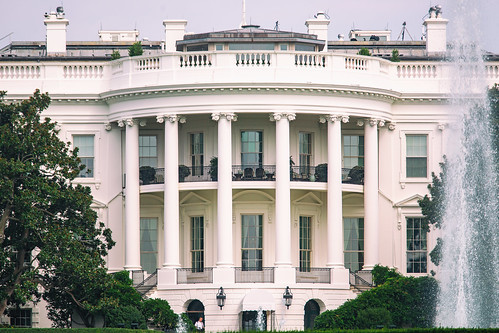In September 2025, California extended and amended authority for its statewide greenhouse gas (GHG) “cap and trade” program through 2045 – and rebranded it as “cap and invest.” The California Air Resources Board (ARB) has administered this program since 2012, as part of broader GHG reduction provisions created by 2006’s Assembly Bill (AB) 32. AB 32 initially committed the state to reduce total GHG emissions back to 1990 levels by 2020 (achieved in 2018); ARB’s latest GHG reduction scoping plan (issued in 2022), seeks to reduce statewide emissions to 85% below 1990 levels by 2045, achieving carbon neutrality. Subsequent legislation extended implementing authority for cap-and-trade and other related programs available to the California Air Resources Board (ARB) and other agencies through 2030. (I wrote about that extension (AB 398) HERE ). The newest legislation (AB 2017 and Senate Bill (SB) 840) continues the state’s GHG reduction efforts by making further changes to ARB’s cap and trade authority. The rest of this note summarizes these changes.
Read MoreAudit, Compliance and Risk Blog
California Extends and Amends its Greenhouse Gas Cap and Trade Program
Posted by Jon Elliott on Fri, Oct 17, 2025
Tags: climate change, sustainability, cap-and-trade, California, Climate, Carbon markets, Environmental Compliance, Climate Risk, California Regulations, Greenhouse Gas Emissions, GHG Reduction, cap-and-invest, California Air Resources Board
EPA proposes to eliminate most mandatory greenhouse gas emission reporting requirements
Posted by Jon Elliott on Fri, Oct 03, 2025
On September 16, 2025, the US Environmental Protection Agency (EPA) published a proposal to eliminate the vast majority of its longstanding Greenhouse Gas Reporting Program (GHGRP), which requires thousands of facilities and organizations to report annual emissions of greenhouse gases (GHGs) (40 CFR part 98). (I’ve written about this program over the years, most recently when EPA issued massive revisions in April 2024 (see HERE). The remainder of this note briefly summarizes EPA’s latest interpretation and identifies the small portion EPA proposes to retain, and the existing GHGRP.
Read More
Tags: EPA, Greenhouse Gas, Clean Air Act, Climate, Environmental Compliance, EPA Regulations, EPA Standards, GHG Reporting, EPA enforcement, Climate Disclosure, Climate Risk, Air Quality
The Trump Administration has issued its budget proposal for federal Fiscal Year (FY) 2026 (October 1, 2025 through September 30, 2026), including a 54% cut in the Environmental Protection Agency (EPA) budget, from $9.1 billion in FY 2025, to $4.16 billion for FY 2026. Many of the cuts apply to grant programs, and the proposal would cut staffing by 9%, from 14,130 full-time-equivalent employees (FTE) to 12,856. Readers should note that these cuts are comparable to those proposed by President Trump during his first term; EPA’s actual annual budget depends on that adopted by Congress (or a continuing resolution in lieu of an adopted budget). The remainder of this note summarizes EPA’s proposed FY2026 budget, including proposed reductions, drawn from EPA’s “Budget in Brief” (68 pages) and “Justification of Appropriation Estimates” (736 pages).
Read More
Tags: EPA, RCRA, tsca, Clean Air Act, Environmental Policy, Climate, EPA Regulations, EPA Standards, Trump, Trump Administration, Climate Reporting
SEC ends legal defense of climate-related disclosure requirements for public companies
Posted by Jon Elliott on Thu, May 15, 2025
On March 27, 2025 the US Securities and Exchange Commission (SEC) voted to stop defending rules adopted in 2024 (during the Biden administration) that would have required selected “public companies” (i.e, listed on national securities exchanges) to provide “climate-related disclosures for investors” in their registration statements and annual reports. SEC had stayed these rules’ effectiveness after being sued by two energy companies, which were later joined by other plaintiffs as well as state and nonprofit supporters of the rules. The latest SEC decision ends the agency’s defense in that litigation.
Read MoreTags: SEC, Environmental Policy, Climate, ESG, Environmental Compliance, Risk Management, Sustainability Reporting, Climate Disclosure, Climate Risk
Environment and Climate Change Canada publishes Phase 1 reporting guidelines for Federal Plastics Registry
Posted by Jon Elliott on Mon, Feb 24, 2025
Canada has established a goal of zero plastic waste by 2030, and has established a variety of regulatory and informational programs to pursue that goal. As part of these effort, Environment and Climate Change Canada (ECCC) has established the Federal Plastics Registry (FPR), along with accompanying regulations requiring reporting by targeted producers of plastic packaging, electronic and electrical equipment, and single-use or disposable products. These entities’ reporting requirements expand annually in three “phases,” beginning with Phase 1 reports starting with selected 2024 data due by September 29, 2025. (I wrote about ECCC’s proposal to establish the FPR, HERE). The remainder of this note summarizes Phase 1 requirements and identifies Phase 2-4 targets.
Read More
Tags: Environmental risks, Environmental, climate change, Environmental Projects, Environment, Environmental Policy, Climate, plastics, Environmental Compliance, Plastic Waste
During 2024, at least five states considered legislation to enact “Climate Superfund” laws targeting fossil fuel companies, applying “polluter pays” principles enshrined in the US federal Superfund law (Comprehensive Environmental Response, Compensation and Liability Act (CERCLA of 1980) and its many state counterparts. At least two states enacted such laws – Vermont and New York. The rest of this note provides brief summaries of these laws.
Read MoreTags: Environmental risks, Environmental, Greenhouse Gas, climate change, Environmental Projects, Environment, Environmental Policy, Climate, environmental law, environmental protection, Environmental Compliance
In July, the US Environmental Protection Agency (EPA) issued the fifth edition of its periodic Climate Change Indicators report, focusing on Indicators related to the human health and societal impacts of climate change. While this 96-page report provides broad policy discussions, it applies data which calibrate ongoing changes that organizations can use to support evaluations of the possible impacts of these changes on their ongoing activities and future prospects. The remainder of this note summarizes EPA’s latest indicators, and how they can be relevant to organizational planning and decision-making.
Read MoreTags: Environmental, EPA, climate change, Environment, Environmental Policy, Climate, environmental protection
SEC adopts climate-related disclosure requirements for public companies
Posted by Jon Elliott on Tue, Mar 26, 2024
On March 6, 2024 the US Securities and Exchange Commission (SEC) announced new requirements that selected “public companies” (i.e, listed on national securities exchanges) provide “climate-related disclosures for investors” in their registration statements and annual reports. SEC is incorporating them into existing requirements to disclose “material information,” under the Securities Act of 1933 and the Securities Exchange Act of 1934. These new requirements are more limited than those proposed by SEC in March 2022 (which I wrote about HERE). The remainder of this note summarizes SEC’s new requirements.
Read More
Tags: SEC, Environmental risks, Environmental, climate change, Environment, Climate
Canada: Federal Court rejects listing of Plastic Manufactured Items as “Toxic Substances” under Canadian Environmental Protection Act
Posted by Jon Elliott on Mon, Feb 19, 2024
Among its many provisions, the Canadian Environmental Protection Act (CEPA) creates several lists of “toxic substances,” and empowers Environment and Climate Change Canada (ECCC) to revise the list. In 2021, ECCC add “plastic manufactured items (PMI)” to one of these lists, but was sued by manufacturers seeking to void the addition. Extensive CEPA amendments were enacted in April 2023 (“Strengthening Environmental Protection for a Healthier Canada Act” (Bill S-5)), including revisions to the toxic substance lists – including recodification of the listing of PMI – and left ECCC’s authority over toxic substances relatively unchanged, so the litigation continued. In November 2023, the Federal Court ruled that the CEPA amendments did not moot the issues in the litigation, and ruled that ECCC had exceeded its statutory and constitutional authority when listing PMI.
Read MoreTags: Environmental risks, Environmental, Greenhouse Gas, climate change, Environment, Environmental Policy, Climate, ECCC, CEPA
Proposal to Require Climate Risks and Resilience Plans from Significant Federal Suppliers
Posted by Jon Elliott on Mon, Nov 28, 2022
On November 10, the Biden Administration announced a proposal to amend the Federal Acquisition Regulation (FAR) to require “major federal suppliers” and “significant federal suppliers” to disclose their greenhouse gas (GHG) emissions and assessments of climate-related risks, and to set targets for GHG emission reductions. The rest of this note summarizes this proposal.
Read MoreTags: Environmental, Greenhouse Gas, ghg, CO2 Emissions, Environment, Environmental Policy, Climate, FAR, NASA, DOD










